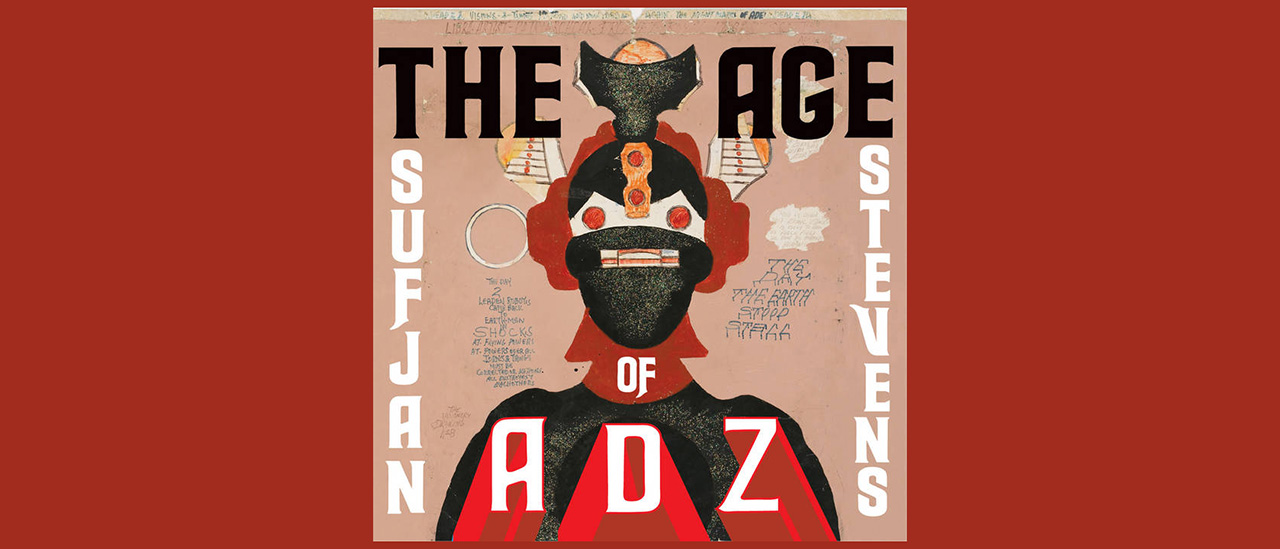“Some thought it inspired; others heard an epic train wreck… His palette broadened, the songs lengthened, the lyrics became more personal”: The prog credentials of Sufjan Stevens’ The Age Of Adz
After a long illness and the admission that his promise of writing an album about each State of the US had been a gimmick, he wobbled then reset with 2010 album that’s a prog-tinged curio

Sufjan Stevens’ sixth studio LP proper was always going to be tricky. Having earlier vowed to write a series of albums themed around each of the USA’s 50 states, he confessed it had been a “promotional gimmick.”
He’d gotten as far as 2003’s Michigan and his brilliant 2005 chamber pop breakthrough Illinois, but now he was ditching the project. There would be no baroque Arkansas, no folky, banjo and brass-imbued Utah. Instead, we got The Age Of Adz – something else entirely.
Artistically, Stevens was shape-shifting. He was also having a “wobble” and needed to re-set. His 2006 outtakes LP, The Avalanche, and that same year’s festive covers set, Songs For Christmas, were decent but stopgap releases; while his 2009 orchestral suite,The BQE, paid all-instrumental homage to The Brooklyn-Queens Expressway, with an accompanying homemade film.
From 2009 to 2010, though, Stevens was poleaxed by a debilitating viral infection, which left him in acute and terrible pain. The illness and his anxiety about a song-based follow-up to Illinois had a profound effect on The Age Of Adz, a record he described as having “a hysterical melodrama to it.”
Part inspired by the work of schizophrenic US outsider artist and self-proclaimed prophet Royal Robertson (whose artwork features on the sleeve), The Age Of Adz is a true “kitchen-sink” production. Glitchy beats, choral passages and a new reliance on fizzing, chaotic synths are go, with all kinds of electronic manipulation feeding into Stevens’ usual orchestral flair.
Reviewers devoted many column inches to 25-minute album closer Impossible Soul. Some thought it inspired; others heard “an epic train wreck.” A bustling, ideas-rich undertaking in five sections, it features input from choral singer Shara Nova and a heavily manipulated lead-guitar solo that’s much more Adrian Belew than new-age folkie.
At times, the album feels like a huge splurge on canvas. It sounds apocalyptic, just as the art of Royal Robertson looks apocalyptic. The art-rock approach also yields perfect pop in Too Much and a red herring in the shape of opener Futile Devices – definitely the closest we get to the sensitive singer-songwriter approach for which Stevens remains best known.
Sign up below to get the latest from Prog, plus exclusive special offers, direct to your inbox!
Prog leanings had certainly surfaced in his work before The Age Of Adz. Enjoy Your Rabbit (2001) was a concept LP inspired by the animals of the Chinese Zodiac, while the lengthy song titles on Illinois (Concerning The U.F.O. Sighting Near Highland, Illinois, anyone?) seemed to signpost something proggier than what lay within.
It was The Age Of Adz, though, which opened up Stevens to no-holds-barred experimentation. His instrumental palette broadened, the duration of his songs lengthened and his lyrics became more personal and candid.
Progressive in many senses, it’s a real curio worth exploring.
James McNair grew up in East Kilbride, Scotland, lived and worked in London for 30 years, and now resides in Whitley Bay, where life is less glamorous, but also cheaper and more breathable. He has written for Classic Rock, Prog, Mojo, Q, Planet Rock, The Independent, The Idler, The Times, and The Telegraph, among other outlets. His first foray into print was a review of Yum Yum Thai restaurant in Stoke Newington, and in many ways it’s been downhill ever since. His favourite Prog bands are Focus and Pavlov’s Dog and he only ever sits down to write atop a Persian rug gifted to him by a former ELP roadie.



